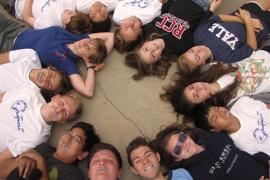Running a camp is challenging. Running a camp in the United States, where violent events occupy the 24-hour news cycle, is even more difficult. There are so many risks and expectations to manage.
The emotional, physical, and financial impacts of violent events, such as the recent attacks in Parkland, Santa Fe, and the YouTube Headquarters, make the exposure top of mind for camp owners, directors, staff, and parents.
Although there has never been a shooting at a summer camp in the US, that doesn’t mean there won’t be one. Responding to a parent asking, “What has your camp done to prepare for an active shooter?” with “Nothing, the statistics are in our favor” is not satisfactory.
In the aftermath of each high-profile event involving children, we see a rise in requests from camps for security assessments and/or active shooter training. It is the Firestorm (a crisis and risk management firm) philosophy that such training can only overlay an underlying preparedness program.
It is the planning process for likely threats in the camp environment that instills the fundamentals that can be utilized when considering response options for acts of violence.
The threat of violence is complex. Unlike schools, perpetrators of violence at camps are more likely to come from the outside — a noncustodial parent or a former, disgruntled employee. Noncustodial parents are one of the biggest violence exposures that camps have. More than 200,000 noncustodial kidnappings occur in the US annually, and the nature of the camp environment presents opportunity for such a kidnapping.
Most camps are unprepared for violent parent interactions, have not received de-escalation training, and do not know how they will respond in such a circumstance. As a result, one of the biggest violence exposures is left unchecked.
Bringing a sense of realism to this issue, very few camps are at the point in their planning, training, and education where they should be considering the complexities of advanced critical response training to the threat of an active shooter. First, focus should be given to the major causes of camp emergencies and crises, including:
- weather events
- waterfront accidents
- wild animals
- fire
- transportation accidents
- communicable/foodborne illness
- sexual abuse
Doing so will position your camp to address the threats that are most likely to occur.
A saying attributed to the United States Navy Seals states that “under pressure, we do not rise to the occasion, we sink to the level of our training.” During preparedness planning, your staff will develop response capabilities that will enable them to fall back on their training. For example, a wild animal is sighted. Do you seek shelter? Where do you seek shelter? Should you make a run for it back to your cabin? Or there is a lightning storm. You’ve sheltered with your campers. One is missing. Do you wait before going outside to look for him? Do you go out in the storm? Do you leave the young campers behind? The response action you choose will be a function of the training you received.
Next Steps
If your camp wants to plan for the threat of an armed intruder/active shooter, fundamental steps must first be taken.
One: Security Assessment
A security site assessment of the camp should be conducted by an independent third party. The assessment will assist in determining which risks and hazards should be included in the emergency plan.
Such an assessment involves an in-depth examination of the camp property and surroundings. It is a crucial step to determine any weaknesses or gaps not only in physical security, but also in policies and procedures as they relate to critical incident response and security. The camp premises should be evaluated from the viewpoint of an attacker. Once weaknesses are discovered, mitigation strategies can be developed.
The focus of the site assessment should not be to merely add more physical security features. For one thing, the majority of security features are technology based — an option not available to many camps because of both their rural locations and their culture. Many camps are places where technology is intentionally left behind.
Can facilities be hardened? Sure. Can we fence out certain threats? Sure. But remember, while fences keep some threats out, they also keep our camp community in. Ask yourself, “Do we have sufficient means of egress if we are fleeing from a threat?” Can “safe rooms” or “safe buildings” be identified — those with the ability to be used during a lockdown scenario? Sure. Do most rural camps have such capabilities? They do not.
A security assessment will encompass a tour of the property and adjacent properties, and will include a review of the existing procedures, equipment, and training that has taken place related to incident response and security.
Two: Emergency Response Planning
Emergency planning involves the development of comprehensive emergency plans that focus on concepts for response. No two emergencies are the same, however, when considering how to protect life and safety, there are four key response protocols everyone must be trained on and know when to use: evacuation, shelter in place, lockdown, lockout.
Emergency plans should be customized to each location. Avoid the temptation of downloading a generic emergency plan from the internet. Yes, you can check the box. You will learn the “what to do” but not the “how to do it.”
Emergency planning also requires a “command and control” structure that addresses who is in charge and how directives will be communicated. An alert system is needed. Use plain language alerts to describe the response actions you are looking for. Ensure you can communicate across the entire property. If you don’t have a PA system, this might include two-way radios and a signal repeater to ensure the entire facility is covered.
For any camp looking to develop an active shooter response plan, it is important to consider that the likely attack will not be what you expect. For example, it could come at nighttime. Ask yourself questions like, “Do we have the ability to awaken every counselor remotely and communicate with them instantaneously to provide direction?” “Are our cabins able to be secured?” “Have we considered whether evacuation routes can be negotiated in the dark?” “Have we required all campers to position closed-toe shoes at the base of their bunk for nighttime evacuation?”
Three: Critical Incident Training
Once your emergency planning program has been reviewed, robust emergency response plans and procedures have been established, people have been trained, communications and alert systems are in place, and a site assessment has been conducted to identify hazards/threats (as well as potential evacuation methodologies, safe rooms/houses), your camp will be ready for critical incident training.
A robust critical incident training regimen for any camp should include both live training and exercises that are done with a consistent level of frequency, variety, and intensity. After-action assessments of the training exercises should also be included as part of the regimen.
Critical incident response training is concept-based. Depending on where people are located at the time the alert is given, or the time they hear or see a violent attacker, and the type of facility or outdoor area, responses will vary. Response options are: evacuate, secure, or confront. Which response to choose is a decision that will be made by the staff member(s) in the moment.
Whenever possible, external entities, such as police, fire, and medical first responders, should also be included in the training. As to training campers, it’s simple. Train them to listen to their counselor and follow their lead.
Conclusion
Steps to critical incident response training:
- Conduct a third-party review of existing emergency response plans and procedures to ensure they meet best practices.
- Conduct a security site assessment of the camp. Ensure emergency response protocols take the security environment into account.
- Update plans to address the identified threats to which your camp is vulnerable.
- Train your staff on those plans and test them.
You will then be ready to conduct critical incident response training.
Suzy Rhulen Loughlin is cofounder of Firestorm Solutions, a nationally recognized leader in crisis management. Suzy utilizes her decades of experience as an attorney, insurance executive, and crisis consultant to advise clients ranging from some of the world’s largest global companies to educational institutions and summer camps on crisis communications, crisis management, emergency response, workplace violence, and threat assessment.
Jason Russell is chief security officer of Firestorm, responsible for leading a team of former Secret Service agents in delivering White House-level threat assessment and protection to schools and businesses on behalf of Firestorm. Jason founded Secure Education Consultants, LLC, now part of Firestorm, and previously served with the United States Secret Service as a special agent. During his tenure, Jason was involved in protective and investigative assignments as well as protecting the president and vice president along with all living former presidents. In addition to protection assignments, Jason served as the Secret Service lead instructor at the International Law Enforcement Academy, a physical fitness coordinator, and on the Internet Crimes Against Children Task Force.




